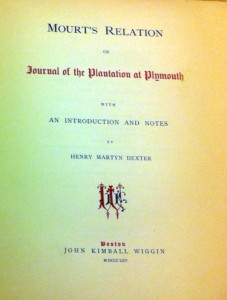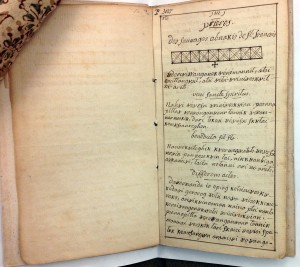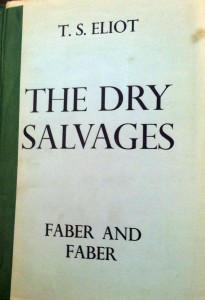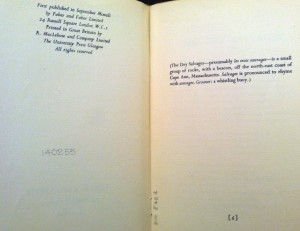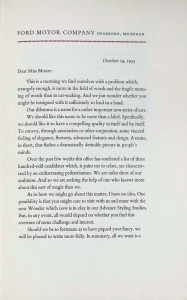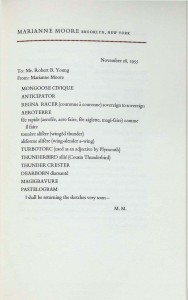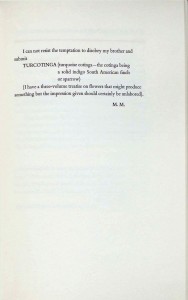[Posted by Allexandra Beatty for AMST 838/438, “America Collects Itself”]
The Legend of Sleepy Hollow illustrated by Felix O.C. Darley (The American Art-Union, 1850).
Washington Irving’s The Legend of Sleepy Hollow is a well-known and beloved tale throughout the northeast. The ghoulish story, set in Tarrytown, New York (or rather, Sleepy Hollow), narrates the encounter between Ichabod Crane and the Headless Horseman. This edition is set in large format (32 x 29 cm), containing 16 pages of text and 6 black and white plates featuring recognizable scenes from the story. Interestingly, these illustrations were not published interspersed between relevant passages, but appended to the complete narrative.
Subscribers to the American Art-Union would have been familiar with this tale, as it was originally published in 1820. This edition, released in 1850 and illustrated by Felix O.C. Darley, provided a different experience for readers who were well acquainted with the twists and turns of the Legend’s plot. Rather, this publication offers a unique synthesis of illustration and text. Through the lens of another artist (fine, not literary), the overall experience is altered dramatically. The accompanying images are finely tuned amalgamations of facial expressions, body language, and sparse scenery giving structure to the composition, and grounding the figures within the narrative arc. Unfortunately, the plates are untitled and, as noted, separated from the original text. As such, they act as their own narrative, beginning first with Figure 1—a scene within Ichabod Crane’s classroom.
 Here, the knobby-kneed schoolteacher is surrounded by a group of disinterested, shy, and mischievous young boys. Ichabod stares half-heartedly at a quill held in one hand while he pares away the tip with a tool in his other.
Here, the knobby-kneed schoolteacher is surrounded by a group of disinterested, shy, and mischievous young boys. Ichabod stares half-heartedly at a quill held in one hand while he pares away the tip with a tool in his other. 
In Figure 2, his expression is starkly the opposite. Ichabod winches his head in earnest, gesturing a word of caution to the surrounded group of listeners. One cowers in fear, another stares wide-eyed, and another has drifted to sleep in his arms. Surrounded by the accouterments of a humble home, this image offers a vision of Ichabod retelling the folklore of Sleepy Hollow, and the legend of the Headless Horseman.
 Figure 3 jumps to a scene between Ichabod and the woman of his affection, 18-year-old Katrina Van Tassel. Perhaps the most evocative of Darley’s illustrations, this piece uses the languid tree limbs mirror Ichabod’s limp body posture as he croons over his beloved. Katrina sits firm and stoic, looking away from how downward longing.
Figure 3 jumps to a scene between Ichabod and the woman of his affection, 18-year-old Katrina Van Tassel. Perhaps the most evocative of Darley’s illustrations, this piece uses the languid tree limbs mirror Ichabod’s limp body posture as he croons over his beloved. Katrina sits firm and stoic, looking away from how downward longing.
 Figure 4 represents the climax of his relationship with Katrina, as they dance in the center of this composition, Katrina nearly meeting the viewer’s eye and Ichabod looking back at her, again, lovingly. Among the crowd are a myriad of characters—some drunk, some sleeping, some foolish, and some simply enjoying themselves. This densely populated scene speaks to the generalized nature of the overall narrative, whereby Washington Irving’s tale typifies a sense of regionalism. His writing seems to apply to the cultural tendencies of northeastern Americans from the early to mid 19th century. As such, the illustration of such figures could prove to be a useful tool in connecting American Art-Union subscribers to the narrative, though published 30 years after its intended audience.
Figure 4 represents the climax of his relationship with Katrina, as they dance in the center of this composition, Katrina nearly meeting the viewer’s eye and Ichabod looking back at her, again, lovingly. Among the crowd are a myriad of characters—some drunk, some sleeping, some foolish, and some simply enjoying themselves. This densely populated scene speaks to the generalized nature of the overall narrative, whereby Washington Irving’s tale typifies a sense of regionalism. His writing seems to apply to the cultural tendencies of northeastern Americans from the early to mid 19th century. As such, the illustration of such figures could prove to be a useful tool in connecting American Art-Union subscribers to the narrative, though published 30 years after its intended audience.

 Figures 5 and 6 finally reveal the Headless Horseman. The first shows the character disguised as a traveler, his face turned away from the viewer. In his lap, an indiscriminate round object sits perfectly out of sight. Notably, the rider’s horse seems to be gesturing in a similarly disguised manner. His head is reared down, as if bowing to the oncoming Ichabod Crane, though wide-eyed and seemingly fear-stricken. The facial expressions of Ichabod and his horse are perfectly mirrored—both caught at the brink of a sharp inhale upon the sight of the cloaked traveler and his horse. The horse’s legs are taught and spread, in a stopped and abrupt motion. Ichabod too seems caught off-guard, as his cloak is still billowing behind him. At their feet, a small puff of dust has been disturbed, signaling unrest and disruption. The last plate features the exciting chase between the Headless Horseman and Ichabod Crane. Again, the horses and their respective riders appear with mirrored expressions. The cloaked rider is finally revealed to be “headless”, while the flank of Ichabod’s panicked plow horse hides the other animal’s face. Ichabod and his horse are both painfully wide-eyed in sheer dread. Darley most successfully conveys the stress and tension of the scene within the body of Ichabod’s horse—the visible rib cage, reaching muscles, and taught neck of the animal bespeak terror and desperation as the two clamor toward safety.
Figures 5 and 6 finally reveal the Headless Horseman. The first shows the character disguised as a traveler, his face turned away from the viewer. In his lap, an indiscriminate round object sits perfectly out of sight. Notably, the rider’s horse seems to be gesturing in a similarly disguised manner. His head is reared down, as if bowing to the oncoming Ichabod Crane, though wide-eyed and seemingly fear-stricken. The facial expressions of Ichabod and his horse are perfectly mirrored—both caught at the brink of a sharp inhale upon the sight of the cloaked traveler and his horse. The horse’s legs are taught and spread, in a stopped and abrupt motion. Ichabod too seems caught off-guard, as his cloak is still billowing behind him. At their feet, a small puff of dust has been disturbed, signaling unrest and disruption. The last plate features the exciting chase between the Headless Horseman and Ichabod Crane. Again, the horses and their respective riders appear with mirrored expressions. The cloaked rider is finally revealed to be “headless”, while the flank of Ichabod’s panicked plow horse hides the other animal’s face. Ichabod and his horse are both painfully wide-eyed in sheer dread. Darley most successfully conveys the stress and tension of the scene within the body of Ichabod’s horse—the visible rib cage, reaching muscles, and taught neck of the animal bespeak terror and desperation as the two clamor toward safety.
As successful as these images may be in visually conveying key points in the written narrative, they seem to lack conclusiveness and fluid linear progression. These six plates offer only a few glimpses into the characters of The Legend of Sleepy Hollow. Furthermore, they offer no sort of finality—though the story ends is a rather poignant paradox. True to the story, however, there is no neat conclusion to be backed in a nice bow and handed to consumers of said piece. Rather, the lack of finality in the visual storyboard reflects the integrity of the original narrative, whereby readers are left stunned, reaching back to page one to begin again.
